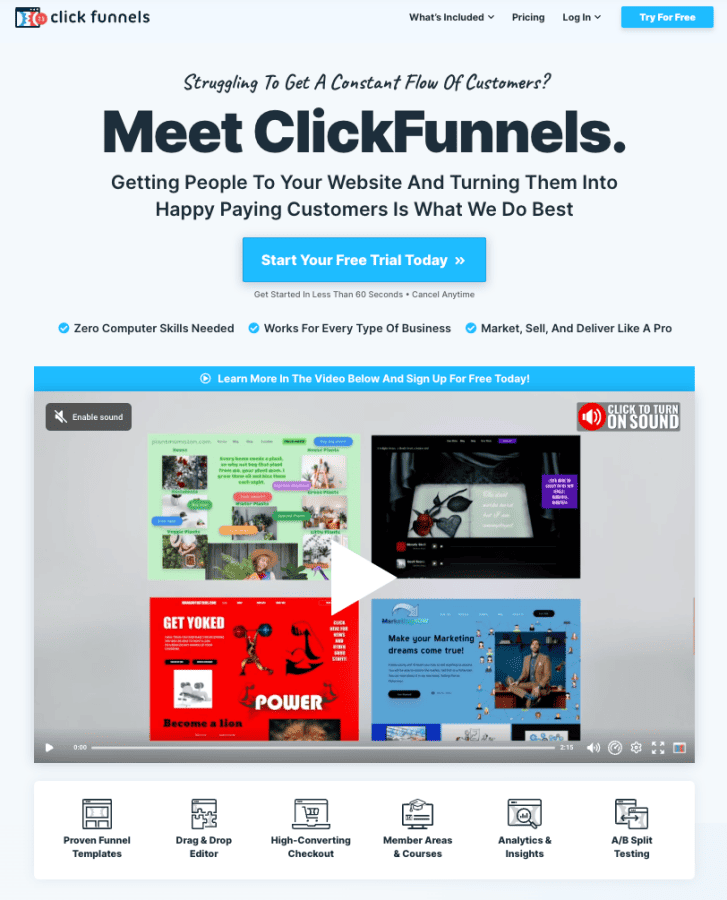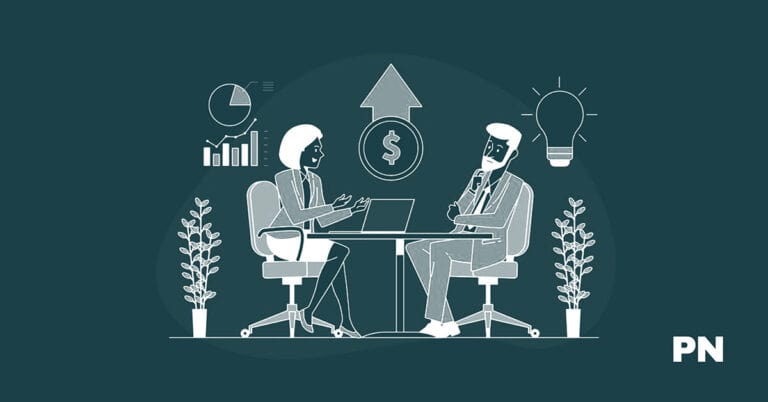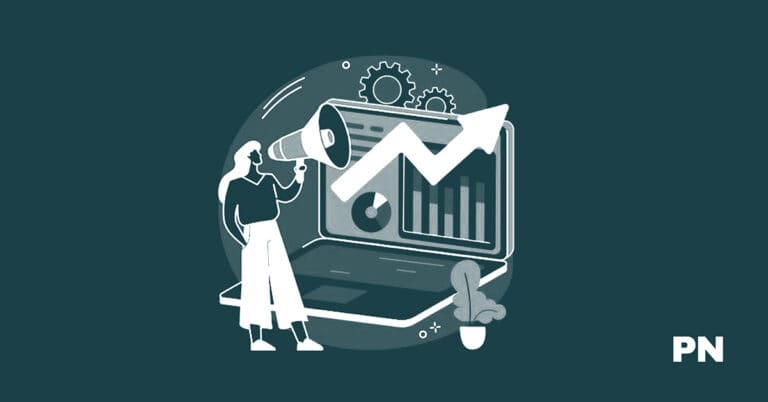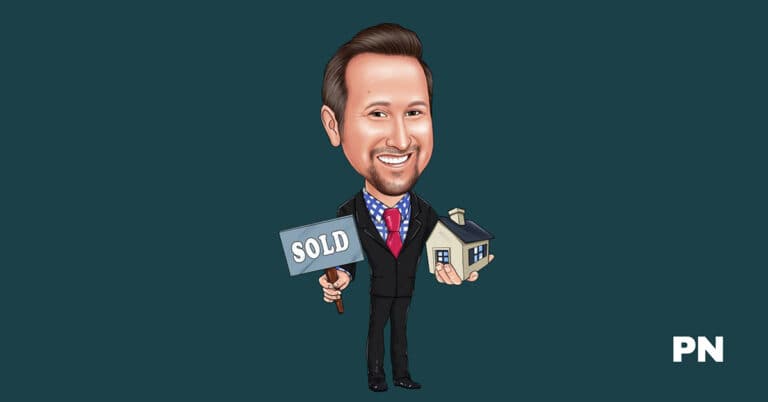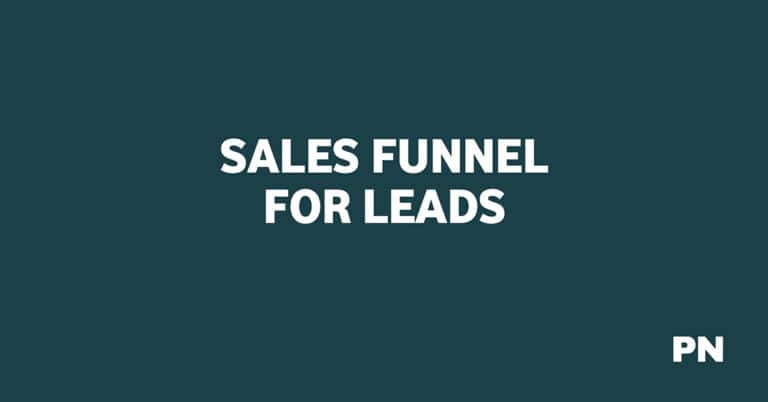Sales Funnel for Books Guide
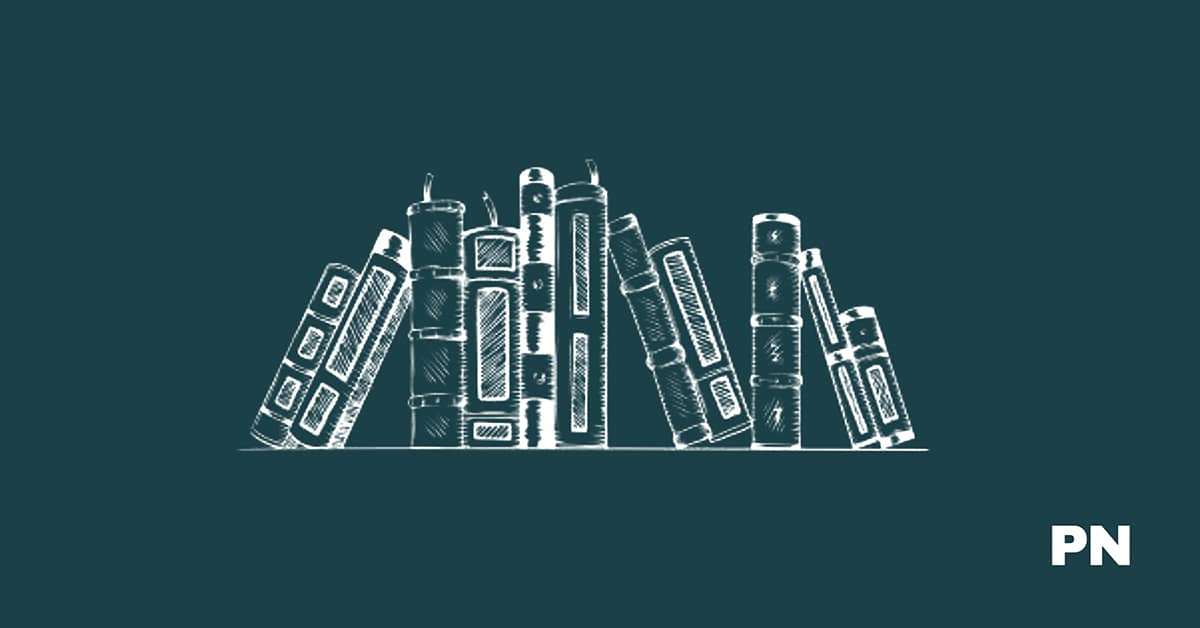
Did you know a well-structured sales funnel can increase book sales and improve reader engagement?
Whether you’re a self-published author or a publishing house, understanding the importance of a sales funnel in promoting your book can significantly improve its success.
A sales funnel is a marketing strategy that guides potential readers through several steps that ultimately lead to a purchase.
Many authors believe their job is done once they’ve published their book. However, the truth is that publishing a book is just the beginning. The real challenge is getting your book in front of your target audience and convincing them to buy it.
A sales funnel can help you achieve this goal by providing value to your readers and building trust with them. By offering a freebie or a low-priced book, you can attract readers to your sales funnel and guide them toward purchasing your main book.
In this guide, I’ll explore the concept of a book sales funnel and how it can help you increase your book sales. I’ll also discuss the different stages of a sales funnel and how you can use them to provide value to your readers.
I’ll also share some tips on optimizing your sales funnel to maximize your book sales. So, whether you’re a new author or experienced, this guide will help you create a successful sales funnel for your book.
What is a Book Sales Funnel?

A book sales funnel is a marketing strategy that guides potential readers from discovering your book to purchasing it. It consists of steps designed to convert likely readers into buyers.
A book sales funnel aims to help you generate new leads, aka future book buyers, and sell copies of existing books.
The book sales funnel is designed to take readers on a journey that starts with awareness and ends with a purchase.
The funnel typically involves several stages, including:
- Awareness: This is the first stage of the funnel, where potential readers become aware of your book. This can be achieved through various marketing channels, such as social media, email, and advertising.
- Interest: Once potential readers know about your book, the next stage is to capture their interest. This can be done by providing them with more information about your book, such as a synopsis, reviews, and endorsements.
- Desire: The third stage of the funnel is to create a desire for your book. This can be achieved by highlighting its benefits, such as how it can solve a problem or provide entertainment.
- Action: The final stage of the funnel is to encourage potential readers to purchase your book. This can be done by giving them a clear call to action, such as a link to buy your book or a discount code.
By guiding potential readers through these stages, a book sales funnel can help you sell more books and increase engagement with your readers. It can also help you generate new leads and build a relationship with your readers, which can lead to more sales in the future.
Why You Need a Book Sales Funnel?
If you are an author, you need a book sales funnel. A book sales funnel is a marketing strategy that helps you sell more books and build brand awareness. It is a process that guides potential readers from awareness of your book to the point of purchase.
A book sales funnel helps you engage and build relationships with your readers. It also enables you to identify potential readers interested in your book. You can then use this information to target your marketing efforts and increase sales.
A book sales funnel is also an effective way to build brand awareness. Creating a funnel tailored to your target audience can increase your visibility and credibility as an author, leading to more opportunities for speaking engagements, book signings, and media coverage.
To create a successful book sales funnel, you must understand your target audience and their needs. You also need to clearly understand your book’s value proposition and how it solves a problem for your readers.
Stages of the Book Sales Funnel
The book sales funnel is a marketing strategy that helps authors attract potential readers and convert them into paying customers.
The funnel is divided into different stages, each with its unique purpose. Understanding the stages of the funnel and how they work together is crucial for any author looking to increase book sales.
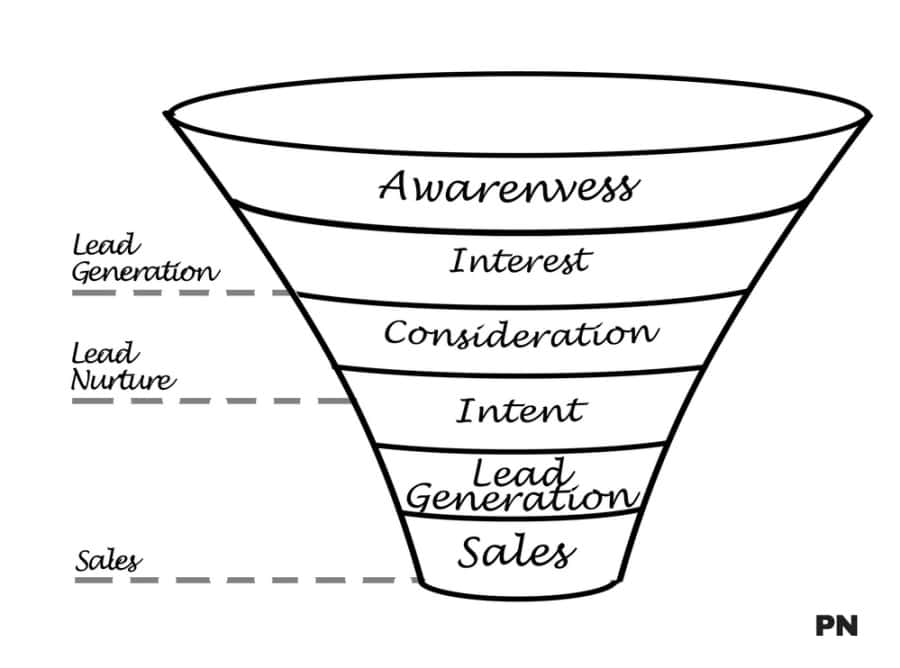
The Awareness Stage (Top of the Funnel, TOFU)
At the top of the funnel, potential readers become aware of your book.
This stage is all about creating interest and generating leads. You want to attract as many potential readers as possible. To help build your audience, you can offer free content, such as a sample chapter or a free e-book.
The Consideration/Evaluation Stage (MOFU)
Once you have attracted potential readers, the next stage is to help them evaluate your book and consider purchasing it.
This stage is about building trust and credibility. You can do this by providing social proof, such as customer reviews and testimonials, and by offering more in-depth content, such as a video trailer or an author interview.
Purchase Stage (Bottom Of The Funnel)
The bottom of the funnel is where potential readers become paying customers.
This stage is about making it easy for readers to purchase your book. You can do this by offering multiple purchase options, such as e-book, paperback, and audiobook, and by providing a seamless checkout process.
Post-Purchase Stage
After a reader has purchased your book, the next stage is to provide a positive post-purchase experience.
This stage is about building loyalty and encouraging readers to share their experiences with others. You can do this by providing excellent customer support, offering exclusive content, and encouraging readers to leave reviews.
Repeat Purchase Stage
The final stage of the funnel is about encouraging readers to make repeat purchases.
This stage is all about creating a long-term relationship with your readers. You can offer discounts, update new releases, and build a community around your brand.
The book sales funnel is a powerful marketing strategy that can help authors attract potential readers and convert them into paying customers. By understanding the different stages of the funnel and how they work together, you can create a successful marketing campaign that drives book sales and builds a loyal fan base.
How Do I Create a Book Sales Funnel?
Creating a book sales funnel involves a series of steps that help guide potential customers toward purchasing your book.
Here are the steps you need to take to build a successful book sales funnel:
- Identify your target audience: The first step in creating a book sales funnel is to identify your target audience. This includes understanding their needs, interests, and pain points. Once you have identified your target audience, you can create content that speaks directly to them.
- Create a landing page: A landing page is designed to capture a visitor’s information through a lead form. This page should include a strong headline, a clear call-to-action, and a lead form that captures the visitor’s name and email address.
- Offer a lead magnet: A lead magnet is an incentive you offer to potential customers in exchange for their contact information. This could be a free book chapter, a checklist, or a guide related to your book’s topic. This helps to build trust and establish your authority in your niche.
- Set up an email autoresponder: An email autoresponder is a series of pre-written emails sent automatically to your subscribers. It is a great way to stay in touch with them and keep them engaged with your content.
- Offer a tripwire: A tripwire is a low-cost, high-value offer designed to convert subscribers into customers. It could be a discounted ebook or a bundle of related products.
- Upsell your book: Once a customer has purchased your book, you can offer them additional products or services related to your book’s topic. This could include coaching, consulting, or a membership program.
Each of these steps is important in creating a successful book sales funnel. Following these steps, you can build a relationship with your audience, establish your authority in your niche, and ultimately sell more books.
What is The Best Funnel Software for Books?
When choosing the best funnel software for books, ClickFunnels stands out as the top choice. ClickFunnels is an all-in-one sales funnel software that offers a wide range of features and tools to help book entrepreneurs build high-converting sales funnels faster and scale/grow their businesses quickly.
Here are some of the unique features of ClickFunnels that make it the best sales funnel software for books:
- Consultants Features: ClickFunnels offers a range of consultant features to help book entrepreneurs build and optimize their sales funnels. These features include funnel building, funnel hacking, funnel scripts, and more.
- Upsells and Downsells: ClickFunnels allows book entrepreneurs to add easily upsells and downsells to their sales funnels, which can significantly increase their revenue per customer.
- Free Funnel Templates: ClickFunnels provides a wide range of complimentary funnel templates that book entrepreneurs can use to quickly build high-converting sales funnels.
- Shopping Cart and Checkout: ClickFunnels offers a built-in shopping cart and checkout system, which makes it easy for book entrepreneurs to sell their books and other products online.
- CRM and Analytics: ClickFunnels provides a powerful CRM and analytics system that helps book entrepreneurs track and analyze their sales funnel performance, customer behavior, and more.
- Tools: ClickFunnels offers a range of tools to help book entrepreneurs build and optimize their sales funnels, including A/B testing, split testing, heat maps, and more.
- Loyalty: ClickFunnels makes it easy for book entrepreneurs to build customer loyalty by offering a range of features and tools to help them engage with their customers and build long-term relationships.
Frequently Asked Questions
What is a funnel in the book business?
A book sales funnel is a marketing strategy that guides potential readers through several steps leading to a book purchase. It turns strangers into loyal readers by creating awareness, interest, desire, and action.
What are the key stages in developing a book sales funnel?
The key stages in developing a book sales funnel are awareness, interest, desire, and action. Awareness is about making potential readers aware of your book, while interest involves capturing their attention and piquing their curiosity.
Desire creates a sense of urgency and excitement, and action guides them toward purchasing.
How do you create a compelling book sales funnel?
You must understand your target audience and their needs to create a compelling book sales funnel.
From there, you can create engaging and valuable content that addresses their pain points and interests. You should also optimize your book’s landing page and use effective call-to-actions to encourage readers to take action.
How can I optimize my book funnel for higher conversion rates?
To optimize your book funnel for higher conversion rates, you should improve your landing page, create compelling offers, and use effective call-to-action. You can also use A/B testing to test different funnel elements and see what works best.
What metrics are crucial for analyzing the performance of a book funnel?
The metrics crucial for analyzing a book funnel’s performance include conversion rate, click-through rate, bounce rate, and average time on page. These metrics can help you identify areas of your funnel that need improvement and track your progress over time.
How do industry benchmarks influence book conversion funnel performance?
Industry benchmarks can help you understand how your book funnel performs compared to other books in your niche.
By analyzing industry benchmarks, you can identify areas of your funnel that need improvement and make data-driven decisions to optimize your funnel for higher conversion rates.
Wrapping Up
Congratulations! You now have a solid understanding of creating a sales funnel for your book. Following the steps outlined in this guide, you can effectively market your book and increase your sales.
Remember, the key to a successful sales funnel is to provide value to your potential customers at every step. By offering freebies, lead magnets, and valuable content, you can build trust with your audience and turn them into loyal customers.
Don’t forget to track your results and make adjustments as needed. Use analytics tools to monitor your traffic, conversion rates, and sales. This will help you optimize your funnel and improve your results over time.
Creating a sales funnel for your book can be a game-changer for your sales. You can turn your book into a bestseller by providing value, building trust, and optimizing your funnel.
Disclosure: We may earn commissions if you buy via links on our website. Commissions don’t affect our opinions or evaluations. We’re also an independent affiliate of many platforms, including ClickFunnels, Kartra, GoHighLevel, Podia, Northwest Registered Agent, and others. We’re not employees of these services. We receive referral payments from them, and the opinions expressed here are our own and are not official statements of these companies.
